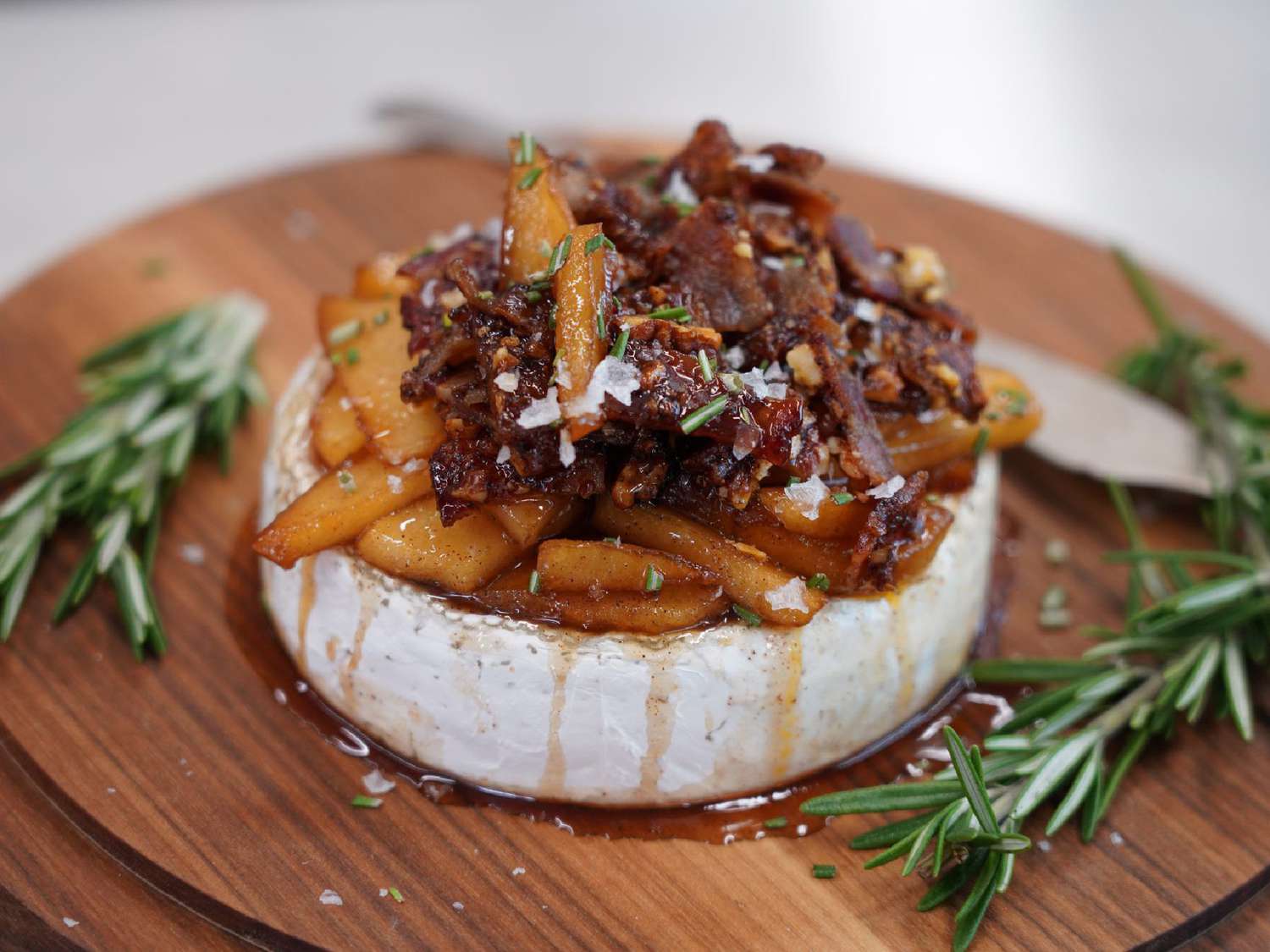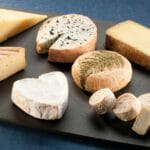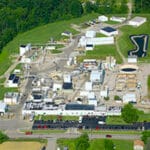The Fungal Future of Brie: Separating Fact from Fiction
Rumors of brie’s demise have been greatly exaggerated. While you can still find this creamy delight in most grocery stores, there’s a legitimate concern about its future, rooted in the microscopic world of fungi. Brie, along with its cousin Camembert, owes its unique flavor and gooey texture to Penicillium camemberti. Modern cheesemaking, however, has prioritized efficiency, relying on only a handful of P. camemberti strains. This lack of fungal diversity makes brie potentially vulnerable. If a disease emerges that targets these select strains, brie production could face significant disruptions, potentially leading to price hikes and shortages. While not extinct, brie is walking a tightrope, highlighting the importance of microbial diversity in our food systems. French scientists warn that the unique fungi crucial for Brie and Camembert production are disappearing. Loss of microbial diversity threatens not only Brie and Camembert, but a wider range of beloved cheeses.
The Importance of Fungal Diversity
This isn’t just a brie problem. This shrinking diversity of cheesemaking fungi could impact other cheeses that rely on specific cultures. Fortunately, researchers are working to identify and preserve a wider range of P. camemberti and other essential cheese fungi, creating a safeguard against future threats. The potential disappearance of Brie highlights the broader issue of biodiversity loss in our food systems. You can contribute to this effort too. Supporting artisanal cheesemakers who employ traditional methods and maintain a greater variety of fungal cultures helps protect this crucial biodiversity. Choosing their cheeses is a vote for a richer, more flavorful future for brie and other cheeses. If you’re curious about other foods impacted by microbial diversity, check out this informative article about Acheta Powder In What Foods.
Why is brie’s future uncertain?
Brie isn’t extinct, but its future is uncertain due to the microscopic world of fungi. Brie’s signature creamy texture and bloomy rind come from Penicillium fungi. Modern, large-scale cheese production favors a few easy-to-work-with fungal strains, leading to a loss of biodiversity. This practice makes brie vulnerable, as a disease targeting the dominant Penicillium could disrupt the industry. While efficient, relying on a few fungal strains is risky. It’s like putting all your eggs in one basket – if the basket drops, the consequences can be severe. Researchers suggest this loss of fungal diversity not only limits potential flavors and textures but also increases vulnerability to future problems. Supporting artisanal cheesemakers who prioritize a wider range of Penicillium is crucial for preserving this diversity and ensuring the future of brie and other cheeses. This is an active research area, and while some experts stress the potential threat, ongoing studies aim to better understand the complexities of fungi and cheesemaking. Preserving microbial diversity is widely seen as crucial for the cheesemaking industry’s long-term health and resilience.
The Role of Artisanal Cheesemakers
Supporting artisanal cheesemakers is key to preserving the diverse fungal strains crucial for brie production. These producers often maintain a richer microbial diversity, acting as custodians of essential fungi. By choosing their products, we support this valuable biodiversity and contribute to the future of brie and other cheeses.
Is Brie Cheese Truly Disappearing?
Brie isn’t vanishing from our plates yet, but its future remains uncertain due to the fascinating world of fungi. Brie relies on Penicillium camemberti for its signature characteristics. Scientists are finding that P. camemberti diversity is shrinking, raising concerns about the cheese’s vulnerability. If all brie-making fungi were identical, a single disease could wipe them out. This lack of diversity makes brie vulnerable. It’s not an immediate extinction-level event, but a cause for concern. Scientists are working to preserve existing P. camemberti strains and explore alternative cultivation methods, safeguarding these essential microbes for brie and similar cheeses. This situation highlights a broader problem: declining biodiversity in our agricultural systems. A diverse array of fungi protects our food supply. Losing this diversity increases susceptibility to diseases that can disrupt the delicate balance of nature. While enjoying brie is still possible, it’s important to appreciate the complex processes and tiny organisms that make our food possible and to support sustainable agriculture that promotes biodiversity. The future of brie is linked to how we protect the biodiversity that sustains us.
The Impact of Industrial Cheesemaking
The decline in P. camemberti diversity is likely linked to industrial cheesemaking practices that favor a few high-performing strains. This focus on efficiency has inadvertently led to a loss of microbial diversity, making brie more susceptible to environmental changes and disease.
| Potential Scenario | Likelihood | Impact on Brie Production |
|---|---|---|
| Complete extinction of P. camemberti | Currently low, but potentially higher if no action is taken | Devastating; brie production would likely cease |
| Significant decline in P. camemberti diversity | Highly probable based on current trends | Increased vulnerability to disease outbreaks; potential disruptions to brie production |
| Successful preservation and diversification of P. camemberti strains | Possible with continued research and support | Long-term security of brie production |
The scientific understanding of fungal biodiversity and its impact on cheese production is constantly evolving. While some experts believe brie is at significant risk, ongoing research aims to understand these complexities and develop effective solutions. New information might change our current understanding, emphasizing the need to stay informed about the latest findings.
Was Brie Invented in Ireland? Unraveling the Cheese’s True Origin
Contrary to some misconceptions, brie originated in France, not Ireland. Historical records place brie in France as early as the 8th century. While the exact date is uncertain, brie’s French roots are well-established. The confusion might stem from other soft cheeses or misinformation. It’s a chance to clarify brie’s true history. Food history can be complex, and some debate surrounds brie’s precise origins. However, current research strongly suggests France as its birthplace.
The French Connection
Brie is definitively a French creation, originating in the Île-de-France region near Paris. The name “Brie” comes from the region, derived from the Gaulish “briga,” meaning “hill” or “height.” Authentic Brie de Meaux and Brie de Melun, made near Paris with unpasteurized milk, are considered the gold standard, embodying the cheese’s rich French heritage. While Brie production now spans the globe, its French roots and history remain central to its identity.
Brie depends on Penicillium camemberti for its distinct flavor and texture. Industrial cheesemaking has narrowed the variety of these fungi, making brie potentially more susceptible to disease and environmental changes. While not an immediate crisis, this decline in fungal diversity poses a long-term risk. Researchers are working to preserve existing fungal strains, ensuring a backup for the future. This situation highlights the need to protect the biodiversity that makes brie special and the importance of ongoing research for understanding the delicate microbial world and its impact on our food. It reminds us that even a simple cheese has a complex history, and preserving that history, along with its biological underpinnings, is crucial.
- Elburn, IL (Kane County): A Small Town’s Transformation and Growth - November 24, 2024
- Elyria Municipal Court: Your Guide to Cases, Payments, and Court Procedures in Ohio - November 24, 2024
- Navigating the Fairborn Municipal Court: A Guide to Services, Records & Procedures - November 24, 2024
















1 thought on “Is Brie Cheese Going Extinct? The Truth About the Fungal Threat”
Comments are closed.